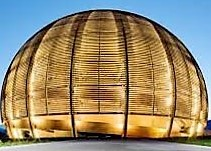Speaker
Description
The $^3$He($\alpha$,$\gamma$)$^7$Be nuclear reaction has been investigated in several times before [1]. The importance of this reaction is manifested in two astrophysical scenarios. It plays a role in the nucleosynthesis of the Big Bang (BBN) through the production of lithium and is also a branching reaction in the solar p-p chain. The astrophysically relevant energy range of this reaction in the two scenarios is E$_{c.m.} = 160 - 380$ keV and E$_{c.m.} = 15 - 30$ keV.
The energy range investigated in previous studies covers mostly E$_{c.m.} = 300 - 3100$ keV. In addition, part of the BBN energy range E$_{c.m.} = 93 - 170$ keV has been studied [2]. Experimental investigation at such low energies is very difficult, thus low energy extrapolation inevitable to predict the reaction rate at solar energies. Recently the reaction cross section has been measured around the $^7$Be proton separation threshold at E$_{c.m.} = 4000 - 4400$ keV [3]. At higher energies known energy levels of $^7$Be exist. No $\alpha$-capture cross section data are available around these energy levels, which would constrain the level parameters, thus the extrapolations toward low energies. With this motivation, the E$_{c.m.} = 4300 - 8300$ keV energy range was investigated using the $\alpha$ beam from the ATOMKI MGC-20 cyclotron.
For the cross-section determination, the activation technique was used. The experiments were performed using a thin-windowed gas cell confining high purity $^3$He gas. During the irradiation, $\alpha$ particles bombarded the $^3$He nuclei and the resulting $^7$Be nuclei were implanted into a cather foil. The half-life of the $^7$Be reaction product is 53.22 days and the relative decay probability to the first excited state in $^7$Li is 10.44 $\%$. The yield of the $\gamma$ rays deexciting this E$ = 477.6$ keV level was measured using high-purity germanium (HPGe) detectors.
The characteristics and technical details of the measurement are presented in detail along with the preliminary results.
[1] E.G. Adelberger et al., Rev. Mod. Phys. 83, 195 (2011)
[2] D. Bemmerer et al. (LUNA Collaboration), Phys. Rev. Lett. 97, 122502 (2006)
[3] T. Szücs et al., Phys. Rev. C 99, 055804 (2019)
